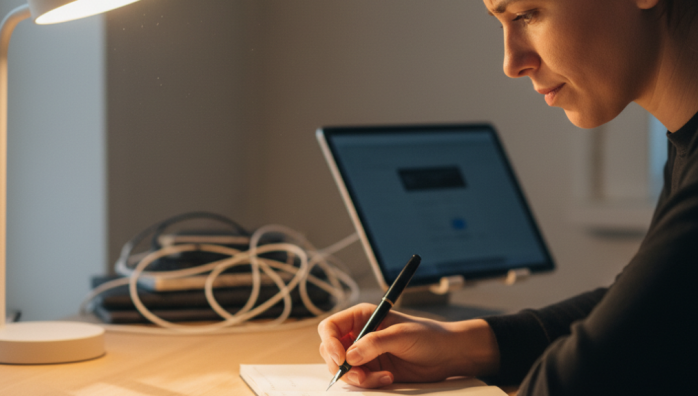Strategies for Achieving Deep Work Sessions
by admin in Productivity & Tools 16 - Last Update November 16, 2025

I used to believe the ability to do \'deep work\' was some kind of innate superpower I just wasn\'t born with. I\'d sit down, determined to focus, only to find myself 45 minutes later down a rabbit hole of emails, notifications, and \'quick\' Google searches. My productivity was a flat line, and my frustration was peaking. The turning point for me wasn\'t a magic app or a complicated system; it was a simple, humbling realization: I was treating focus as an expectation, not a practice.
The foundational mindset shift I had to make
Honestly, the biggest hurdle was mental. I stopped seeing deep work as an on/off switch. It isn\'t something you can just activate at will, especially in our hyper-connected world. I started thinking of it like a muscle. My focus \'muscle\' was weak from years of atrophy, constantly being pulled in a thousand directions. The goal wasn\'t to run a marathon on day one, but to start with small, consistent workouts. This shift from \'forcing focus\' to \'training focus\' changed everything for me. It removed the guilt and replaced it with a sense of gradual progress.
My practical, non-negotiable deep work ritual
Once my mindset was right, I built a simple ritual. It\'s not about complex rules, but about creating clear boundaries that signal to my brain, \'Okay, it\'s time to go deep.\' I found that without a ritual, the transition from shallow, administrative tasks to deep, cognitive work was nearly impossible.
Step 1: Defining the \'what\' and \'why\'
Before I even think about minimizing distractions, I grab a simple notepad. I write down the single most important thing I want to accomplish in the upcoming session. Not a list, just one thing. For example, \'Outline the introduction for the quarterly report.\' I also add a \'why\' – \'so I can get clear feedback by tomorrow.\' This clarity is crucial. In the past, I\'d just sit down with a vague goal like \'work on the report,\' which was an open invitation for procrastination.
Step 2: Creating a \'sacred\' space and time
This has two components for me: physical and digital. Physically, I clear my desk of everything except my laptop and my notepad. My phone goes into a different room. Non-negotiable. Digitally, I close every single tab and application that isn\'t essential for the task at hand. I use a simple app blocker to prevent myself from unconsciously navigating to distracting websites. I also block out the time in my calendar, so colleagues see I\'m unavailable. This creates a powerful commitment device.
Step 3: The warm-up and the wind-down
I learned the hard way that jumping straight into complex work is jarring. Now, I take two minutes to simply breathe and review my single objective. That\'s my warm-up. When the session is over, I don\'t just jump back into my emails. I take five minutes to write down what I accomplished and what the very next step is. This creates a sense of closure and makes it much easier to start the next session.
Tools that actually help, not hinder
I\'ve tried dozens of flashy productivity tools, and most of them just became another source of distraction. My toolkit now is brutally simple: noise-canceling headphones (often with no audio playing), a basic timer (like the one built into my computer), and a minimalist text editor. The goal is to use tools that disappear into the background, not ones that demand your attention. The tool isn\'t the solution; it\'s just a support for the system.
What I do when I inevitably get distracted
Even with this system, my mind wanders. It\'s human. The old me would get frustrated, which would completely derail the session. The new me has a plan. I keep that notepad next to me. When a distracting thought pops up (\'I need to email Sarah back\'), I quickly jot it down on the pad and immediately return my focus to the task. I don\'t analyze it or act on it. By \'capturing\' it, I give my brain permission to let it go for now. This single habit has been a game-changer in handling internal distractions without breaking my flow.
Ultimately, achieving deep work sessions isn\'t a destination. It\'s an ongoing practice of setting intentions, managing your environment, and being kind to yourself when you slip up. It\'s a skill I\'m still honing, but these strategies have transformed my work from a chaotic mess into something focused, productive, and far more rewarding.














